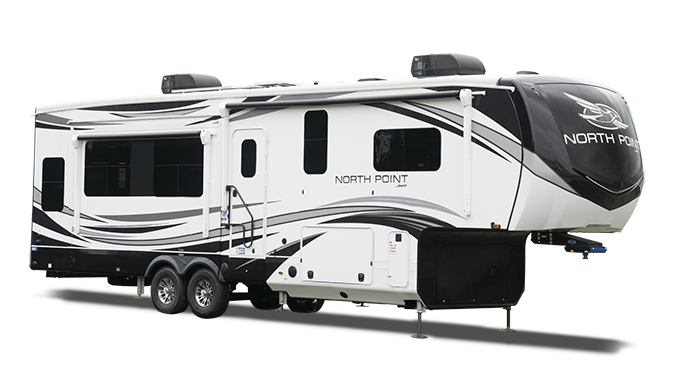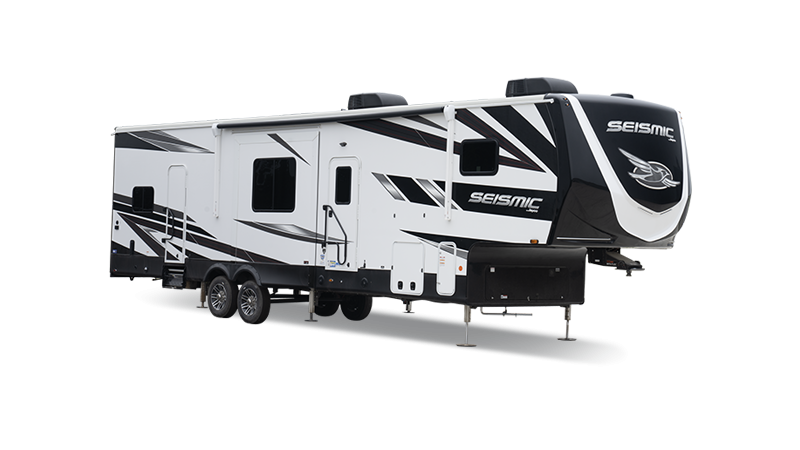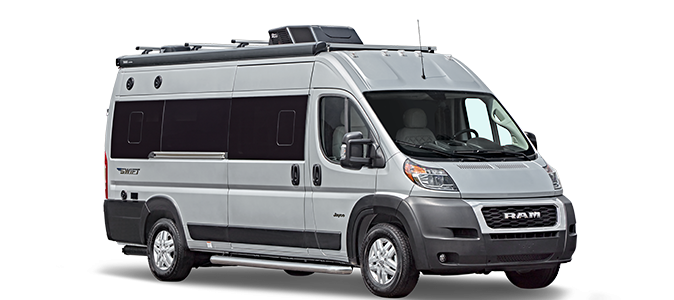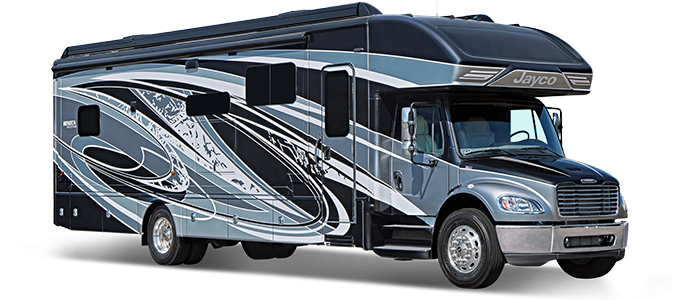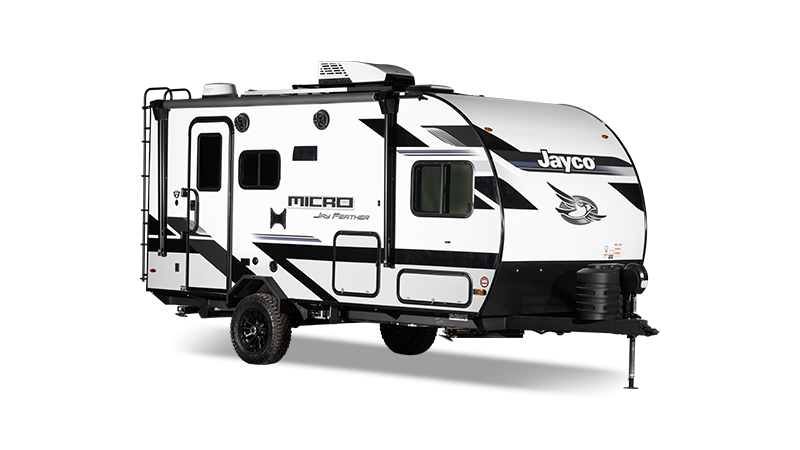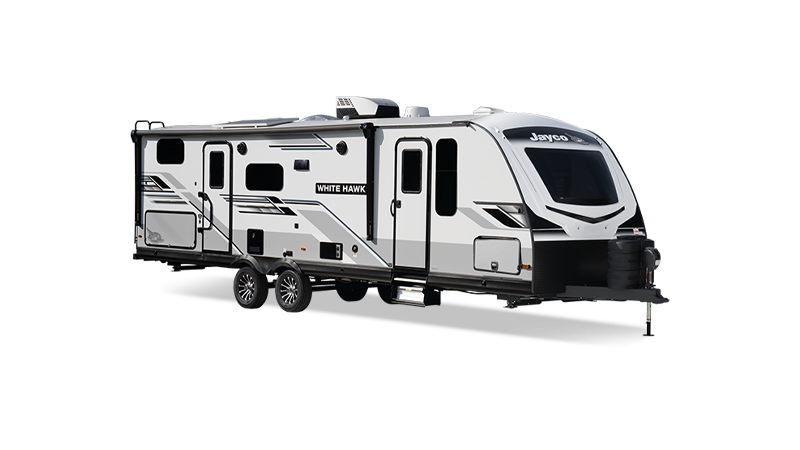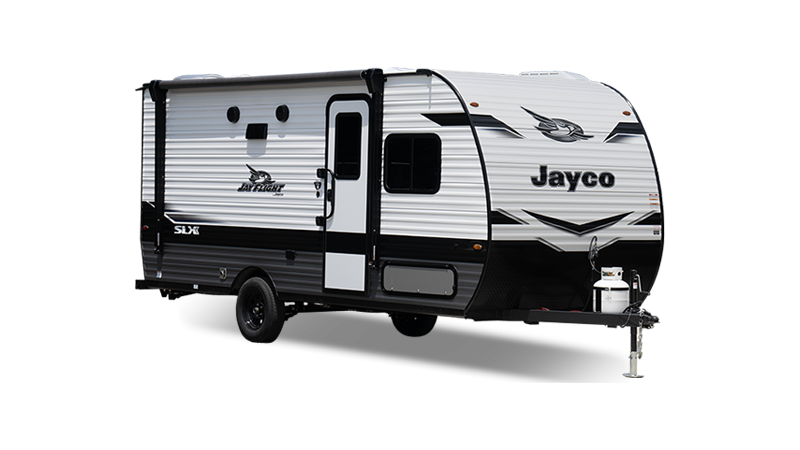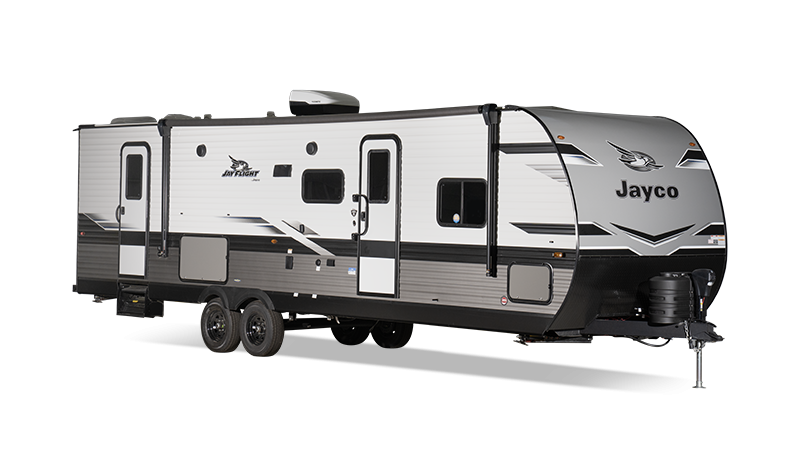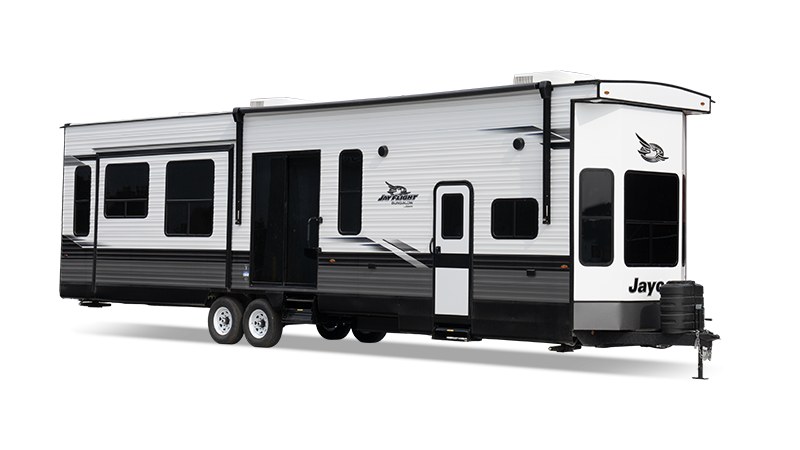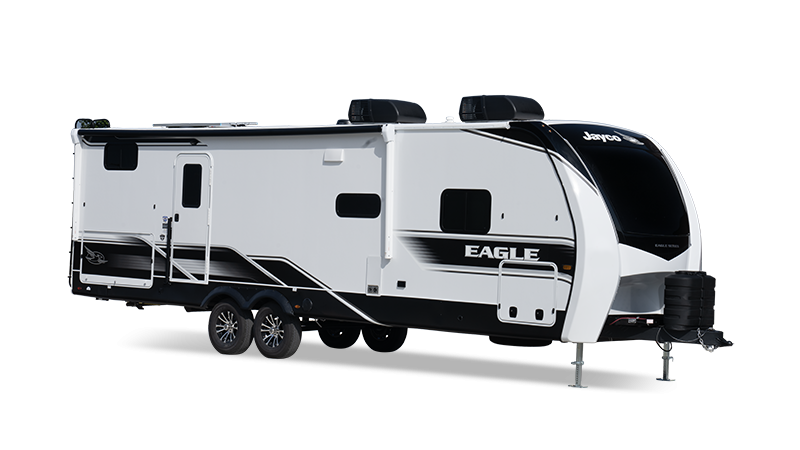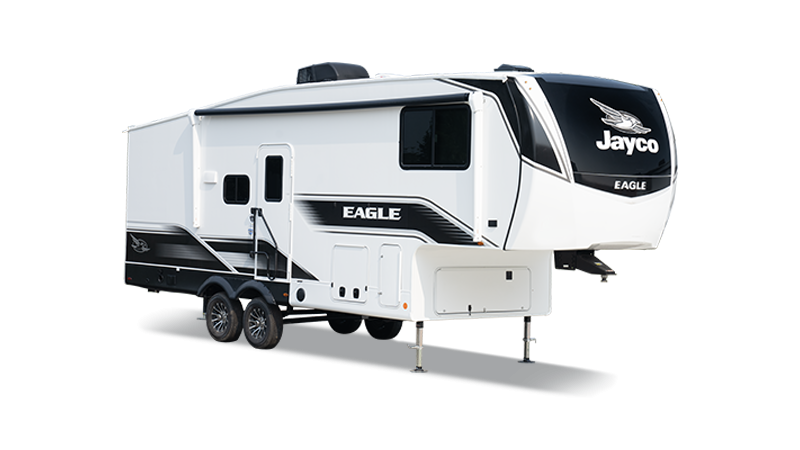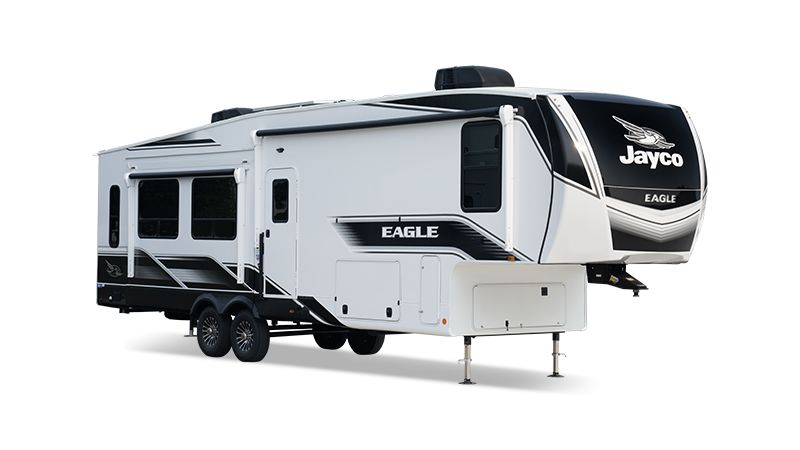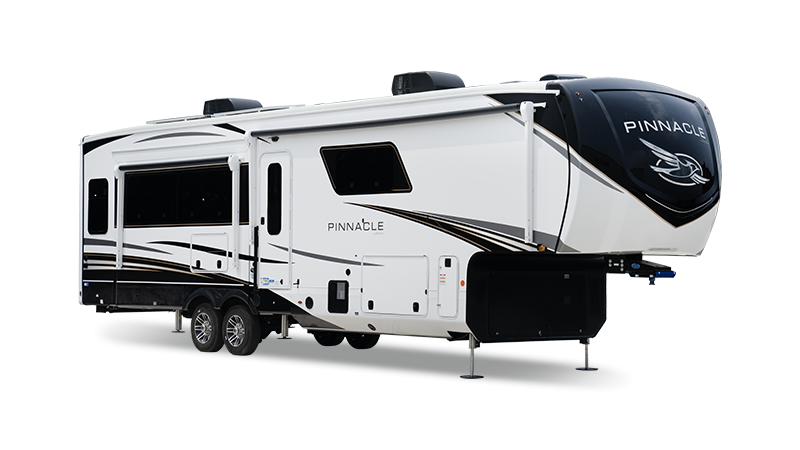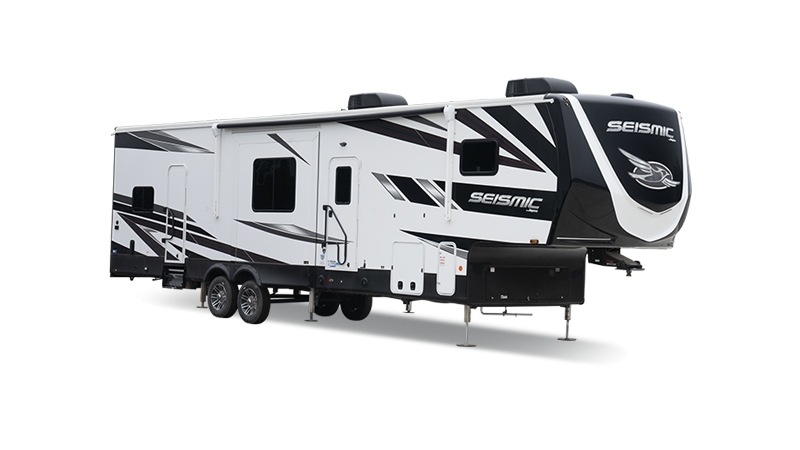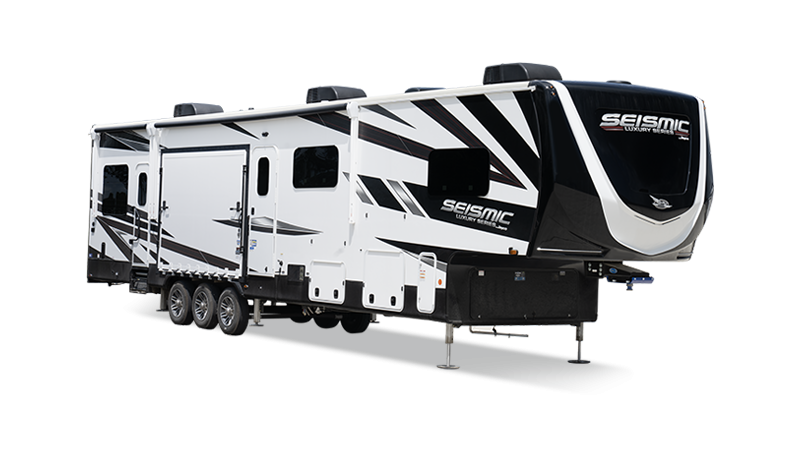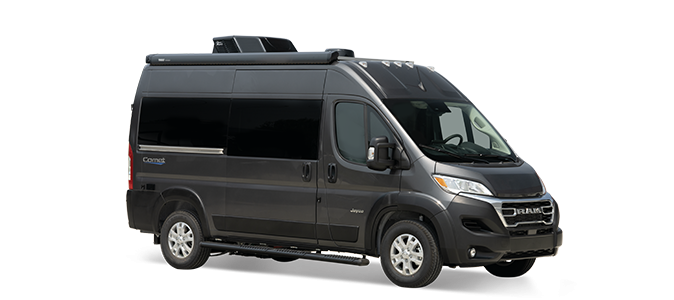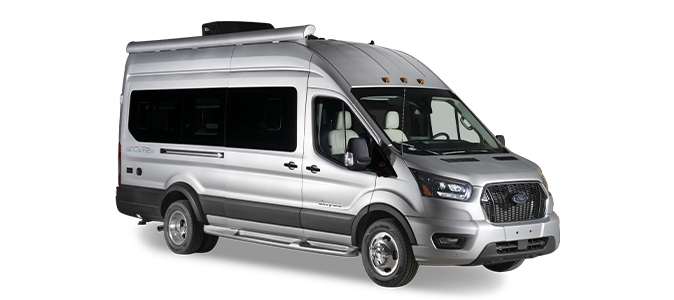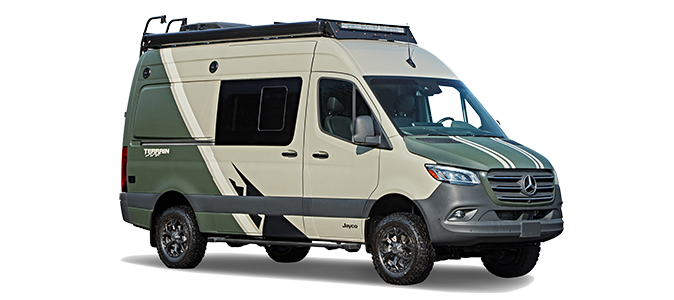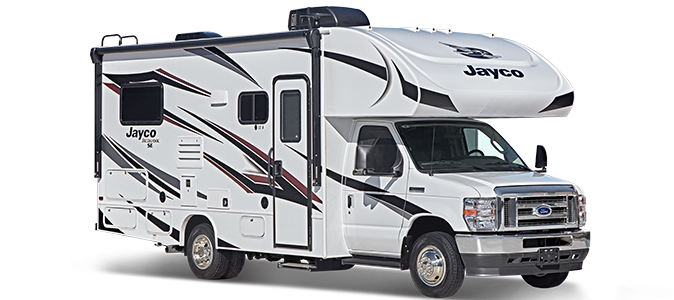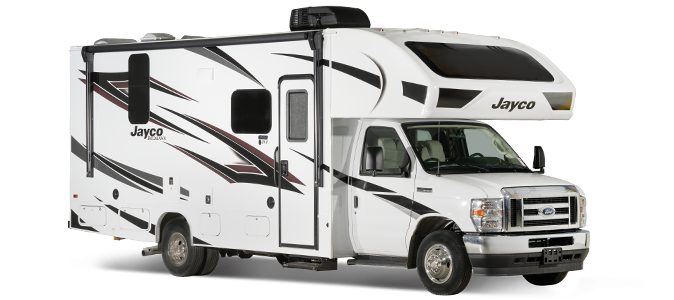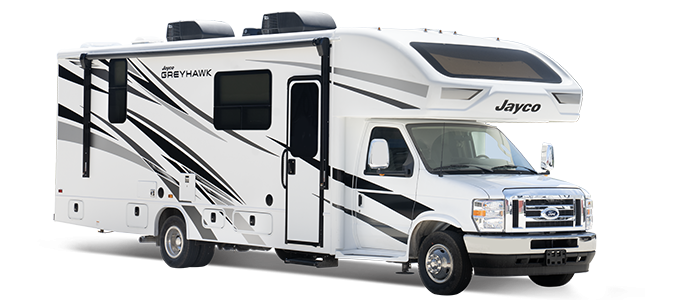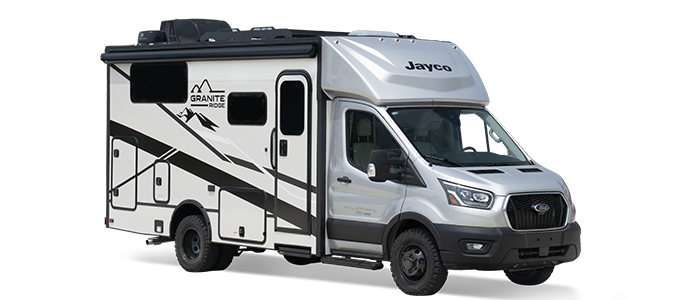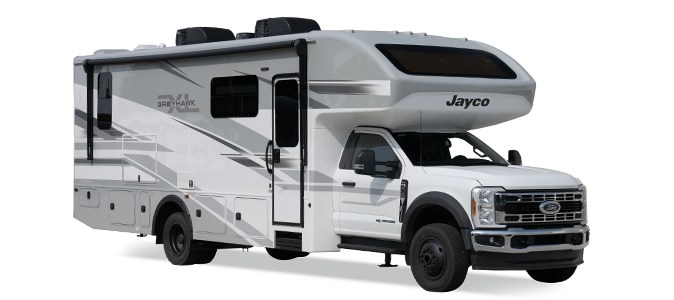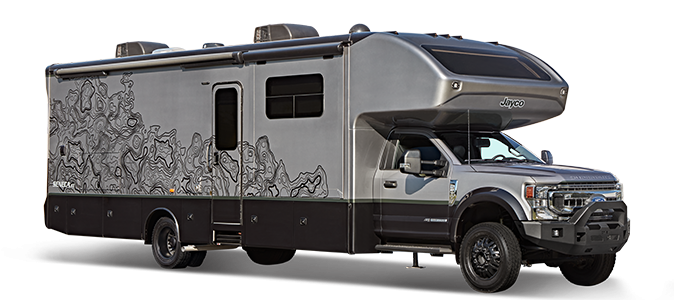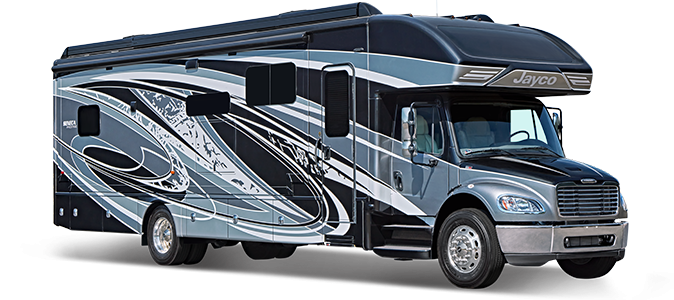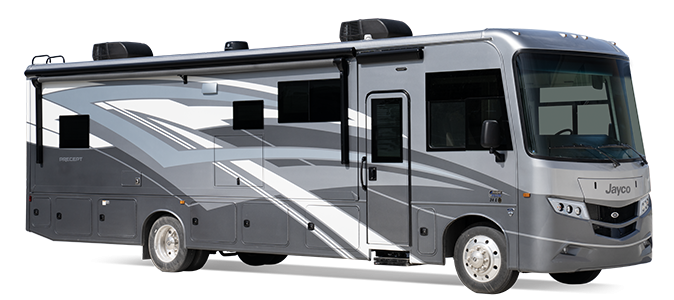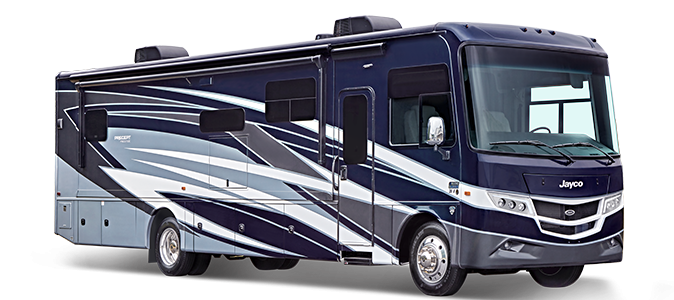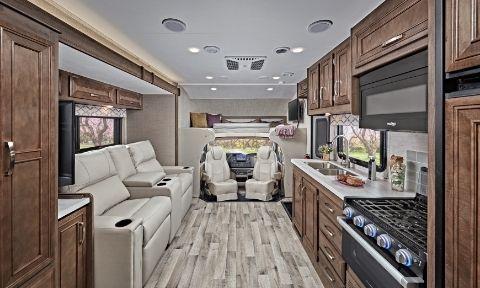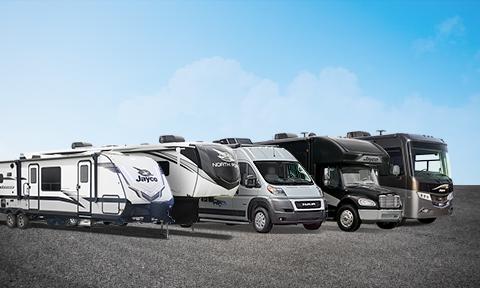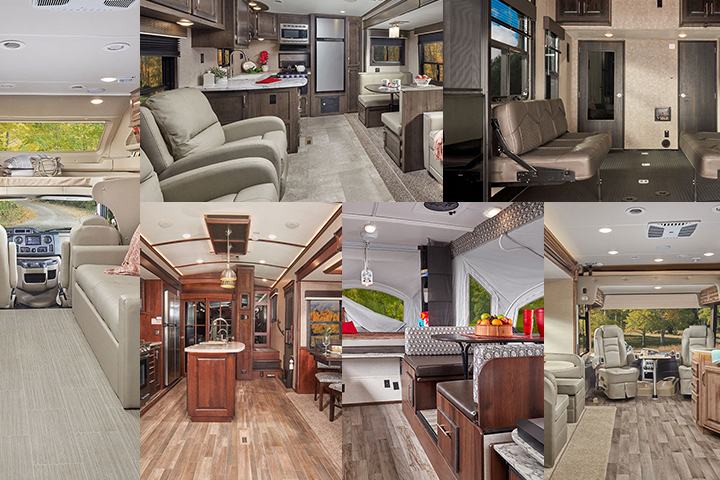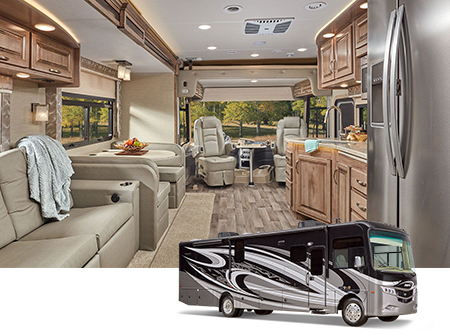A key step along the way to your ideal RV is understanding the different types of RVs and how to choose between them. They all offer something a little different, and one is sure to suit travelers no matter wants and needs. So, think about where you’ll go, who you’ll go with and start visualizing which kind of RV will be the most fun for you.
Towable RVs
Travel trailers
This is the most popular type of RV. Travel trailers typically have four hard walls and are available in a wide range of lengths, anywhere from 10 to 40 feet and can weigh up to 12,000 pounds. They are thoughtfully engineered to make set up and tear down at camp quick and easy.
The case for travel trailers: The variety of available floorplans and features are some of the biggest appeals of travel trailers. No matter the size of your camping group or how long you plan to be on the road, there’s likely a travel trailer you can tow comfortably.
 Fifth wheels
Fifth wheels
These trailers look a little different because rather than connecting to the tow vehicle with a traditional rear hitch, they use a hitching mechanism in the bed of a pickup truck. These are typically on the longer and heavier side, up to 45 feet long and about 15,000 lbs. They have multi-level interiors because of the elevated area in the front which is often called the “gooseneck.” There’s a subset of fifth wheels called luxury fifth wheels—yup, the name basically speaks for itself.
The case for it fifth wheels: Fifth wheels are very livable. They allow you to spend more time hopping from adventure to adventure, or staying at a site you’ve fallen in love with. These models are popular among veteran RVers who use their units a lot and know which features and layouts they like. That’s saying something.
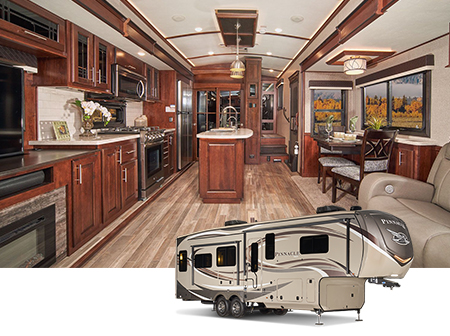 Toy haulers
Toy haulers
Available in various sizes in both travel trailers and fifth wheels, these trailers are aptly named. In addition to comfortable living and sleeping spaces, they include versatile garage spaces for large gear or toys. The garages themselves are sometimes designed to be converted into a sleeping space or lounge area.
The case for toy haulers: Even if you don’t have jet skis or four wheelers, toy haulers are oh-so practical. Many people get creative with the garage and make into an art studio, office or just a place for the pets. Oftentimes antique collectors and workcampers love a toy hauler just as much as the extreme sports enthusiast.
Motorized RVs
Class C
Often built on a form of automotive chassis with a wider body, Class C motorhomes have the recognizable overhead bunk area over the cab. Like the travel trailer, there is a lot of variety in size, shape and floorplan options, diesel or gas engines. They can tow smaller vehicles or trailers. You’ll hear the largest version of this RV is often called a Super C.
The case for Class C motorhomes: There’s a type of Class C for just about any family or couple no matter where they go or for how long. The overhead bunk guarantees bonus sleeping or storage space. You’ll find many of the living area benefits and features as a Class A.
Class B
They may not look like it, but these are more than just a van with a bed in the back. Creative living areas and equipment make the most out of the limited space, allowing for things like entertainment, cooking and eating.
The case for Class B motorhomes: These RVs are nimble and not that much different to drive than a normal SUV or van. The combination of the basic comforts and the ability to travel in and out of cities, to events or to take a quick overnight trip contribute to the growing appeal of this model.
Class A
These bus-looking RVs range anywhere from 20 feet to about 45 feet in length. They are built on specialized chassis. There is generally the choice between gas and diesel models. Most diesel models have engines in the rear—often called diesel pushers—while gas models have engines in the front. They can tow a vehicle or trailer.
The case for Class A motorhomes: You’ll have a hard time finding a type of RV that feels more like home, with residential-sized bathrooms, bedroom and kitchens. If you love to drive, you’ll love the feeling behind the wheel of one of these powerful vehicles. They make extended periods on the road exceedingly comfortable, with the basic comforts of home or with the amenities of a luxury retreat available.
Now that you’re up to speed on the different types of RVS, you’re ready to explore some floorplans. Get started here.


